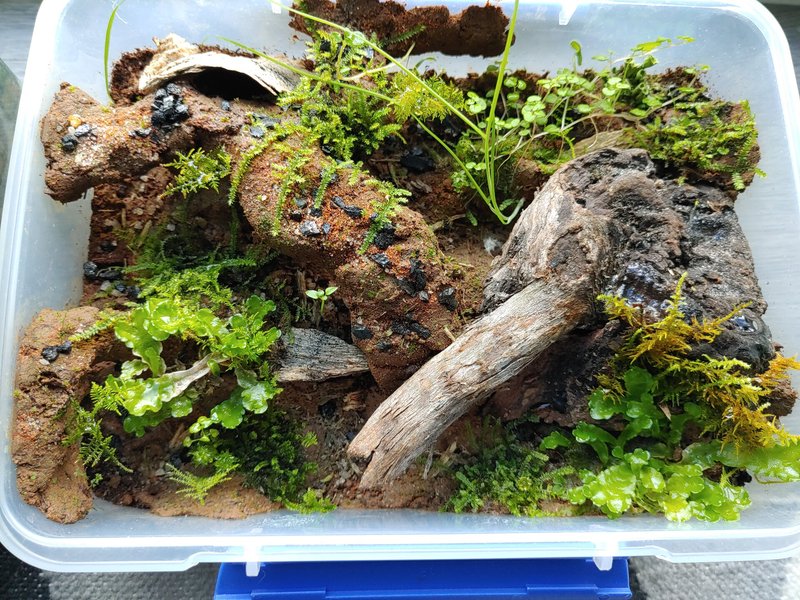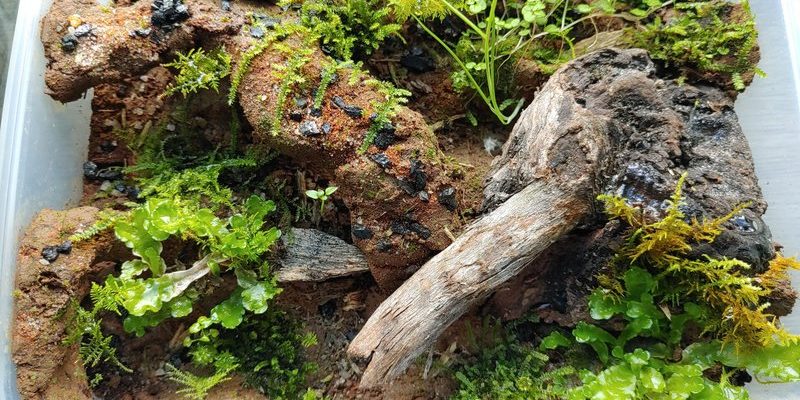
Now, you might be wondering how to get started. Picture yourself at your local pet store or online, looking for the right materials. You want to create a habitat that mimics their natural environment, which is usually damp, dark, and filled with decaying wood and plant matter. The right setup doesn’t just help you observe their behavior; it helps keep them healthy and happy. So, let’s dive deep into the world of velvet worms and see how you can create an ideal enclosure for these fascinating creatures.
Understanding Velvet Worms: A Quick Overview
Velvet worms belong to the phylum Onychophora, which is a group of soft-bodied, terrestrial invertebrates. They are surprisingly ancient, dating back to around 500 million years ago! Given their unique evolutionary path, they possess fascinating characteristics. They have soft, segmented bodies covered with a velvety texture and can grow up to 15 centimeters long, depending on the species.
These little guys are nocturnal hunters that rely on their slippery, sticky slime to trap prey. Imagine watching a tiny creature sneak up on its food using this natural glue. It’s mesmerizing! But to observe this hunting method effectively, you need to create the right environment that encourages their natural behaviors—hence the need for a carefully planned enclosure.
Choosing The Right Container
The first step in creating an enclosure for velvet worms is choosing the right container. Your options are vast, from glass terrariums to plastic bins. Here are some factors to consider:
- Size: Choose a container that’s large enough for them to roam without feeling cramped. A minimum of 10 gallons is a good start for a small population.
- Material: Glass offers a clear view and helps maintain humidity levels, but plastic can be lightweight and easier to handle.
- Ventilation: Look for containers with lids that allow some airflow, as velvet worms thrive in humid environments but need to breathe.
Once you’ve settled on a container, make sure it’s clean and free of chemicals or residues. You wouldn’t want to place your delicate velvet worms in a toxic environment, right?
Creating The Ideal Habitat
Now that you have your container, let’s talk about habitat creation. Velvet worms enjoy a moist, dark space that mimics their natural forest floor environment. Here’s how to set it up:
1. **Substrate Layer:** Start with a base layer of substrate. This could be a combination of soil, leaf litter, and decaying wood. Aim for about 3-5 inches thick to give them some depth to explore.
2. **Moisture Level:** Velvet worms need a humid environment, so you can lightly mist the substrate with water. Just be careful not to overdo it; puddles aren’t helpful for these critters. Aim for a humidity level of around 70-90%.
3. **Hiding Spots:** Add some small pieces of bark, rocks, or even moss to create hiding spots. Velvet worms love to burrow, and these makeshift homes make them feel secure.
Setting up the habitat can feel a bit like creating a mini-jungle. Each layer adds a piece of the puzzle!
Temperature Considerations
Temperature plays a vital role in creating a suitable enclosure for velvet worms. They thrive in conditions similar to a tropical forest. Ideally, maintain a temperature range between 20°C to 25°C (68°F to 77°F). Here’s what you can do to keep the environment stable:
– **Heating Sources:** If you live in a cooler climate, consider using a small, adjustable heat mat under one side of the enclosure to create a temperature gradient.
– **Monitoring:** Invest in a reliable thermometer and hygrometer to keep an eye on temperature and humidity levels. This way, you can quickly adjust if things aren’t quite right.
– **Insulation:** If you notice that your enclosure fluctuates too much, try wrapping the outside with insulation material to help maintain a consistent temperature.
Keeping the environment stable can be key to the well-being of your velvet worms!
Feeding Your Velvet Worms
Feeding velvet worms is one of the most exciting parts of keeping them! These hunters enjoy a diet of small insects, like **fruit flies** or **small crickets**. Here’s how to feed them effectively:
1. **Food Variety:** Experiment with different food sources to see which your worms prefer. While fruit flies are staples, some might go for tiny mealworms, too.
2. **Feeding Frequency:** Generally, you can feed them once or twice a week. Overfeeding can lead to a dirty enclosure, so keep portions small.
3. **Feeding Method:** Use a small dish or simply drop food into the enclosure. Watch your velvet worms in action as they use their slime to catch food!
Feeding can feel a little like hosting a dinner party where the guests have very particular tastes. Observing their feeding habits will provide intimate insights into their behaviors.
Maintenance and Cleaning
Maintaining a clean enclosure is essential for keeping your velvet worms healthy. Here’s what you need to do:
– **Regular Checks:** Keep an eye on the substrate and moisture levels. If you see it getting too dry or too wet, adjust accordingly. A balanced environment is key.
– **Cleaning Schedule:** Set a schedule to clean the enclosure every few weeks. Replace old substrate, remove uneaten food, and clean any surfaces to prevent mold and bacteria.
– **Stress Minimization:** When cleaning, try to disturb your velvet worms as little as possible. It’s best to do this when they’re most inactive, usually during the day.
Maintaining the enclosure can feel a bit like tending a garden, where regular nurturing leads to vibrant growth—only here, the “plants” are your fascinating little invertebrates!
Observing Velvet Worm Behavior
Now comes the fun part—observing your velvet worms! The beauty of creating this enclosure lies in watching how these creatures interact with their environment. Here are some tips for engaging observation:
– **Timing is Everything:** Since velvet worms are nocturnal, plan most of your observation for the evening. Turn off bright lights and use a soft flashlight to spotlight their activities without startling them.
– **Behavior to Watch:** Look out for hunting behavior, which often involves them moving slowly and stealthily. Their slime production is a highlight—watch for the fascinating moment they capture prey.
– **Documenting Findings:** Keep a journal of your observations! This adds an extra layer of engagement. Plus, it’s fun to look back and see how their behavior changes over time.
Watching velvet worms in action can be like peeking into another world. Their unique movements and hunting methods are bound to keep you entertained.
Creating an enclosure for velvet worm observation is not just about housing unique creatures; it’s about crafting a living, breathing ecosystem. With careful consideration of their habitat, diet, and temperature needs, you can create a cozy sanctuary that not only supports their health but enhances your experience of observing these amazing beings.
In the end, patience and attention to detail go a long way. So, embrace the quirks of your velvet worms, enjoy their mesmerizing behavior, and immerse yourself in the wonders of their tiny universe. Happy observing!

